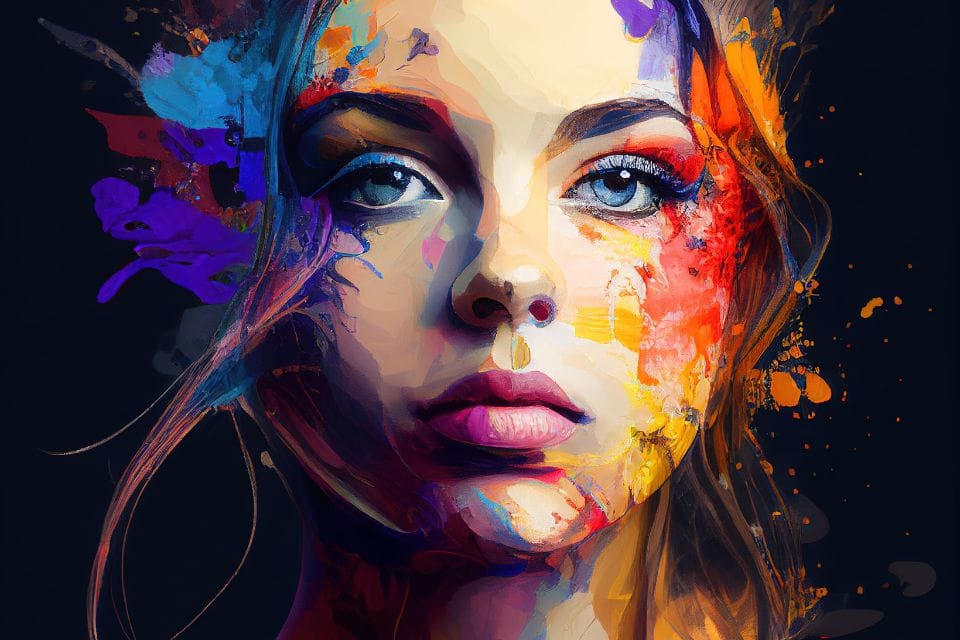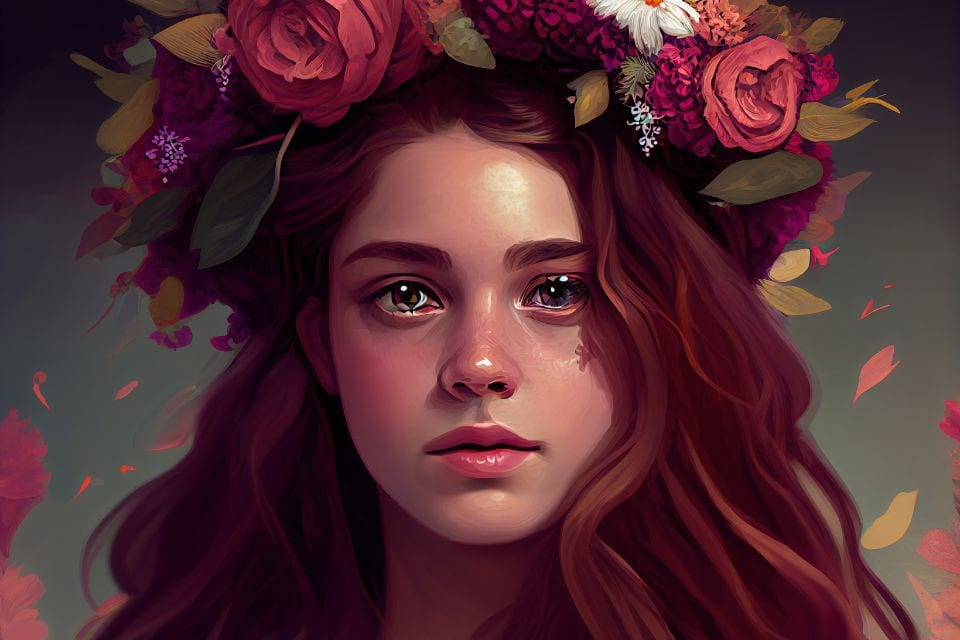Prompt Engineering AI Art: The Future of Creative Automation
Unleash your inner artist with Prompt Engineering AI Art: create stunning masterpieces effortlessly & redefine creativity in the digital age!
Imagine being able to create stunning artworks with just a few words. Sounds like magic, right? Well, thanks to a new technology called prompt engineering, you can turn your imagination into reality with the help of artificial intelligence (AI).
This comprehensive guide will explore the fascinating world of prompt engineering for AI art. We will dive deep into prompt engineering, how it works, why it matters, and most importantly, how you can master this innovative technique. So let’s embark on this exciting journey together!
Crafting Better Prompts for AI Art
| Prompt Engineering Technique | Description |
|---|---|
| Use precise language | Be specific with descriptions of what you want the AI to generate. Avoid vague terms. |
| Provide examples | Give the AI sample images of what you’re looking for to help guide it. |
| Adjust parameters | Tweak settings like image size, number of images, etc. to fine-tune the output. |
| Iterative refinement | Progressively edit the prompt through multiple cycles based on results. |
| Check capabilities | Understand limitations of the AI system you’re using. |
| Control variables | Change one element at a time to isolate the impact. |
| Leverage metadata | Use tags, labels, titles, etc. to steer the AI. |
| Optimize phrasing | Carefully choose words and sentence structure to get better results. |
What is Prompt Engineering and AI Art?

Prompt engineering is crafting text prompts that can generate realistic or stylized images using AI models. It is the bridge between human creativity and machine learning algorithms. With carefully designed prompts, artists can unleash their imaginations and witness their ideas transformed into captivating visual representations.
AI art, or generative art, refers to artworks created or assisted by artificial intelligence algorithms. Unlike traditional art forms that rely solely on human skill and creativity, AI art leverages the power of machine learning models to generate unique and original pieces.
Let’s briefly examine their history better to understand the emergence of prompt engineering and AI art.
YouTube video: Watch here
How does Prompt Engineering Work?
Prompt engineering involves several key components and steps that contribute to creating compelling AI-generated images. Let’s explore each step in detail:
- Choosing an AI Model:
- Generative Adversarial Networks (GANs)
- Variational Autoencoders (VAEs)
- Transformers
- Writing a Text Prompt:
- Image content, description, and mood
- Art form, style, and artist references
- Additional details, such as lighting, colors, and framing
- Generating an Image:
- Applying the chosen AI model to the written prompt
- Evaluating and Refining the Image:
- Assessing the generated image’s quality and coherence
- Iteratively refining the prompt to achieve desired results
YouTube video: Watch here
Benefits and Challenges of Prompt Engineering

Prompt engineering offers numerous advantages for artists exploring new dimensions in their creative journey. Let’s take a closer look at its benefits:
Benefits:
- Enhances Creativity and Expression: By collaborating with AI models, artists can push boundaries and unlock new realms of creativity.
- Saves Time and Resources: Prompt engineering enables artists to generate visual concepts quickly, saving valuable time during the ideation phase.
- Expands Access and Diversity: AI art democratizes artistic creation by providing tools accessible to a wider audience, promoting diversity in artistic expressions.
- Enables Experimentation and Innovation: Artists can experiment with various prompts and AI models, fostering innovative approaches to artistic creation.
However, prompt engineering also presents some challenges that artists should be aware of:
Challenges:
- Requires Skill and Practice: Crafting effective prompts requires honing a unique skill set that combines linguistic proficiency with artistic sensibilities.
- Depends on Data Quality and Availability: The quality of training data used for AI models significantly impacts the generated outputs’ realism and creativity.
- Produces Unpredictable Results: While AI models strive for accuracy, output consistency might vary due to inherent algorithmic limitations or unpredictable factors.
- Raises Ethical and Legal Concerns: Ownership rights, plagiarism concerns, bias mitigation, privacy protection are essential aspects that prompt engineers must consider throughout their creative process.
Examples and Tips for Writing Effective Prompts

To achieve the best results in prompt engineering for AI art, it is crucial to master the art of crafting effective prompts. Let’s explore some examples and valuable tips:
Examples of Effective Prompts:
1. Landscape Painting Prompt:
- Image content: A serene mountain landscape with a flowing river.
- Description and mood: Peaceful, with vibrant colors capturing the beauty of nature.
- Art form, style, and artist references: Impressionistic style inspired by Monet’s water lilies.
2. Surreal Portrait Prompt:
- Image content: A person with an elongated neck wearing a crown made of clouds.
- Description and mood: Dreamlike, mysterious, and ethereal.
- Art form, style, and artist references: Salvador Dali’s surrealism combined with contemporary elements.
Tips for Writing Effective Prompts:
- Use clear, concise, and concrete language to convey your vision effectively.
- Separate different elements within the prompt using commas for clarity.
- Utilize keywords and phrases that align with the AI model’s vocabulary and domain expertise.
- Refine prompts through trial and error to find the optimal balance between specificity and creativity.
YouTube video: Watch here
Ethical and Future Implications of Prompt Engineering
As prompt engineering continues to evolve alongside AI art, addressing ethical considerations arising from this innovative practice is essential. Let’s delve into some key issues:
Ethical Considerations:
- Ownership and Authorship: Determining ownership rights when AI models contribute significantly to the artwork raises complex legal questions.
- Originality and Plagiarism: The fine line between inspiration and plagiarism becomes blurred when AI models generate outputs reminiscent of existing artworks.
- Quality and Value: Assessing AI-generated art’s artistic quality and value remains subjective, challenging traditional evaluation criteria.
- Bias and Fairness: AI models can inherit biases from training data, leading to potential discrimination or misrepresentation in generated images.
- Privacy and Security: Prompt engineering necessitates access to personal data, raising concerns about privacy protection and potential security vulnerabilities.
Future Implications:
Prompt engineering for AI art holds vast potential for future advancements. Here are some exciting possibilities on the horizon:
- Personalization and Customization: Tailoring prompts to individual preferences allows for highly personalized AI-generated artworks.
- Collaboration and Co-creation: Artists can collaborate with AI models, enabling a harmonious blend of human creativity and machine intelligence.
- Education and Learning: Prompt engineering offers educational opportunities by facilitating interactive learning experiences through visual exploration.
- Entertainment and Gaming: Integrating prompt engineering in entertainment media opens doors to immersive gaming experiences powered by AI-generated content.
- Research and Development: Prompt engineering catalyzes research in machine learning algorithms, advancing the field’s understanding and capabilities.
The Advantages and Challenges of Prompt Engineering of AI Art

Prompt engineering is crucial in generative AI and AI art. With advancements in AI technologies like GPT-3 and DALL-E, prompt engineering allows for more control over the output and reduces the need for extensive training data. It also enables the creation of personalized outputs tailored to user preferences.
Crafting effective prompts requires an understanding of human language and iterative refinement. Choosing the right prompt significantly impacts the output, so experimentation is necessary to achieve desired results.
One significant application of prompt engineering is in chatbots and natural language processing systems. Large language models like chatGPT enable human-like conversations and revolutionize human interaction with technology.
By using effective prompts, we can guide AI models to generate accurate and relevant images and text. It’s both an art and a science, involving practices such as starting with keywords or phrases, incorporating context-specific information, and iterating for better results.
Prompt engineering plays a vital role in generative AI and AI art by enabling personalized, accurate, and relevant outputs. It opens up possibilities for automation and new forms of art. The potential of prompt engineering excites me as a prompt engineer in the field of AI.
Examples of Successful Prompt Engineering of AI Art

In recent years, generative AI has seen massive advancements, thanks to the power of AI and natural language processing. One of the most exciting applications of this technology has been the creation of AI art, which combines the creativity of humans with the power of AI systems. One of the key drivers of this field has been the art of prompt engineering, which involves crafting effective prompts to guide the AI model to generate the desired output.
Here are some examples of how AI art has been created using prompt engineering:
OpenAI’s DALL-E 2
DALL-E is a neural network that generates images from text descriptions. By providing specific prompts that describe an art style or scene, DALL-E can create stunning, high-quality images almost indistinguishable from those created by humans. The most recent update, DALL-E 2, can understand and generate even more complex and nuanced images.
ChatGPT prompt engineering
ChatGPT is a chatbot AI platform that uses language models like GPT-3 to generate responses to human language prompts. By refining the prompts and experimenting with different AI models to generate text, ChatGPT can generate accurate and relevant responses that mimic human conversation.
Large Language Model (LLM) prompt engineering
LLMs like GPT-3 and Stable Diffusion are some of today’s most powerful AI language models. Users can quickly generate a vast amount of data by creating prompts that guide the model to generate text data. Fine-tuning these models using training or text data can yield even better results.
Text-to-image generation
Tools in Udemy’s “GPT-3 Unleashed” course demonstrate how prompts can guide AI models to generate images from text descriptions. By crafting effective prompts that guide AI to create specific features in images, users can generate stunning artwork and help improve the overall performance of AI image generation.
Prompt engineering has revolutionized how we use AI tools to generate art. By combining the power of language models with the creativity of humans, prompt engineers are leading the way in creating stunning works of generative AI art.
The Future of Prompt Engineering in AI Art
Prompt engineering will revolutionize how AI systems are used for text and image generation. The power of AI will be harnessed like never before, and the results will be astounding! AI models like ChatGPT and DALL·E 2 will be used to create everything from chatbots to artistic renderings. The possibilities are endless.
Large language models (LLMs) like GPT-3 and Stable Diffusion are already used to generate accurate and relevant output using natural language. AI-generated images are also becoming popular, especially with tools like DALL·E. But with better prompts, the output quality can improve even further.
Crafting Effective Prompts for AI Tools
Crafting effective prompts is both an art and a science. The goal is to create prompts to help the AI model generate the desired output. While it may seem simple, generating a good prompt can be quite challenging.
Here are a few best practices to help you create effective prompts:
- Experiment with different AI models to generate the desired output
- Use the appropriate job title and field of expertise in the prompts
- Use tools like Udemy to fine-tune your prompts and generate better results
- Use text-to-image generation to help improve the quality of AI-generated images
- Iterate and refine your prompts based on the output quality
Using AI to Refine Prompts
AI tools like ChatGPT can also be used to refine prompts. The idea is to guide the model toward generating output that meets the desired criteria. While it may not always work, using AI to refine prompts can lead to better results.
The Use Cases of AI Art
With better prompts and generative AI tools, AI-generated art is becoming popular in many fields. Here are a few of the everyday use cases of AI art:
- Text generation for chatbots and automated customer support
- Image generation for use in advertising, graphic design, and social media
- Refining prompts for better text and image output
- Automated text and image generation for web applications and mobile apps
FAQs
What is prompt engineering? Prompt engineering involves crafting well-defined prompts to improve problem-solving skills.
Why is prompt engineering important for problem-solving? Effective prompt engineering helps individuals develop critical thinking and creative problem-solving abilities.
How can prompt engineering enhance problem-solving skills? By providing clear and concise prompts, individuals can practice analyzing problems and developing innovative solutions.
Are there any examples of prompt engineering for problem-solving? Yes, some examples include providing specific scenarios, asking thought-provoking questions, or using visual aids to stimulate problem-solving.
Where can I find more prompt engineering techniques? There are various online resources and courses available that provide comprehensive guidance on prompt engineering for problem-solving.
Conclusion
Imagine being able to create stunning artworks with just a few words. Sounds like magic, right? Well, thanks to a new technology called prompt engineering, you can turn your imagination into reality with the help of artificial intelligence (AI).
This comprehensive guide will explore the fascinating world of prompt engineering for AI art. We will dive deep into prompt engineering, how it works, why it matters, and most importantly, how you can master this innovative technique. So let’s embark on this exciting journey together!
References
1. Prompt Engineering: From Words to Art and Copy – Saxifrage Blog
AI art is here, and prompt engineering is the job of the future. Take my prompt template and learn how to find all the art styles, …
2. Weird New Job Alert: What Is an AI Prompt Engineer? – PCMag
AI prompt engineering can mean one of two things: You’re writing prompts to get stellar results from an AI (text or art that can be used …
3. Prompt Engineering Basics – ChatGPT & A.I. Art – Udemy
This course offers secret sauce prompts and formulas you can use to enhance your ChatGPT outcomes. It will also give you new and exciting examples …
4. Is Crafting ‘Super Prompts’ for A.I. Generators the Art of the Future? Probably Not
Ben Davis considers A.I. generators’ effect on the economy of art and the emerging field of the ‘prompt engineer.’
I’m Alexios Papaioannou, an experienced affiliate marketer and content creator. With a decade of expertise, I excel in crafting engaging blog posts to boost your brand. My love for running fuels my creativity. Let’s create exceptional content together!







